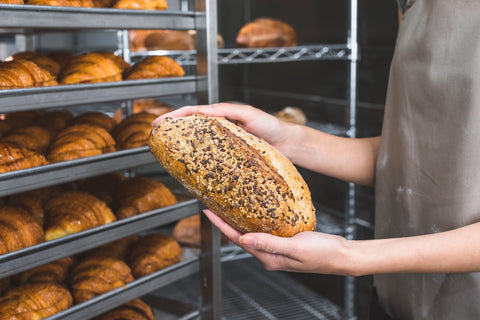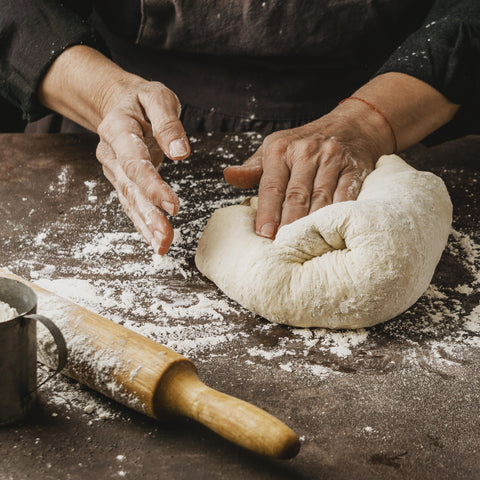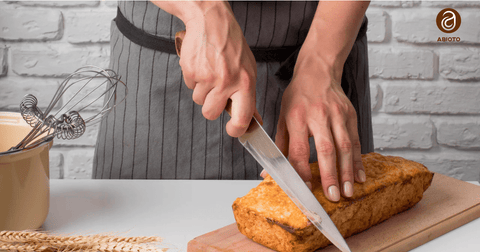There’s nothing like the aroma of fresh bread filling your kitchen. The crackle of a golden crust, the soft, airy crumb—these are the things bakers live for. But even with the best flour, the finest tools, and a well-loved starter, your bread can fall flat (literally) if one critical element isn’t right: proofing.
Enter the bread proofer—a game-changing tool that helps bakers of all levels produce consistently delicious, bakery-worthy bread at home.
If you've ever asked, “Why didn’t my dough rise like it should?” or “Why is my crumb too dense?”, this article is for you. We're diving deep into why a bread proofer isn’t just a luxury—it’s a must-have for serious bakers.
Understanding the Role of Proofing in Bread Baking
Before we talk about tools, let’s get something straight: Proofing is everything.
Proofing is the final rise of dough before it goes into the oven. During this stage, yeast ferments the sugars in the flour, releasing carbon dioxide that expands the dough. The result? Airy texture, complex flavor, and that beautiful oven spring we all aim for.
But proofing is incredibly sensitive to two key factors:
-
Temperature
-
Humidity
Even small fluctuations in your kitchen can derail your dough. Too cold, and the yeast slows down. Too warm, and your dough overferments. That’s where a bread proofer earns its keep.
What Is a Bread Proofer?
A bread proofer is a controlled environment—usually a compact, enclosed box—that maintains the ideal warmth and humidity for yeast fermentation.
While you can try to improvise with a warm oven or sunny windowsill, it’s nearly impossible to maintain consistent conditions without one. With a quality bread proofer, you can:
-
Set and maintain precise temperatures (typically between 75°F–95°F)
-
Create the perfect humidity to prevent crusting
-
Proof dough more efficiently, even in winter
-
Control fermentation time and avoid over-proofing
Top Benefits of Using a Bread Proofer
-
Consistent Results Every Time
Baking without a proofer is like trying to drive without headlights. You might get there, but you’re flying blind. A proofer gives you the consistency to bake perfect loaves, batch after batch.
-
No More Kitchen Guesswork
How many times have you left dough near the stove, hoping the heat would “kind of” help? Abioto’s bread proofer eliminates the guesswork. You no longer have to worry about fluctuating room temperatures or drafty counters.
-
Better Texture and Flavor
A steady proof leads to strong gluten development and better gas retention, which translates into a lighter crumb and a more flavorful loaf.
-
Year-Round Baking Confidence
Cold winter mornings? No problem. Overly air-conditioned summers? Handled. Your baking doesn’t have to stop just because the weather changes.
-
Versatility Beyond Bread
Most bread proofers double as multi-use devices. You can use them for:
-
Yogurt making
-
Sourdough starter maintenance
-
Chocolate tempering
-
Culturing butter or kefir
Talk about getting your money’s worth!
The Difference Between a Bread Proofer and a Proofing Bowl
Let’s clear up a common misconception. A bread proofer and a proofing bowl for bread are not the same thing, but they do work beautifully together.
Bread Proofer:
-
A device that controls the environment (temperature + humidity)
-
Used to proof one or multiple doughs at once
-
Often has multiple settings and functions
Proofing Bowl for Bread:
-
A vessel (like a banneton or mixing bowl) used to hold shaped dough during the final rise
-
Helps maintain structure and shape
-
Often lined with linen or lightly floured to prevent sticking.
You can—and should—use a proofing bowl inside a bread proofer for best results. Together, they help your dough rise with both structure and flavor.
Signs You Need a Bread Proofer in Your Baking Setup
Still not convinced? Here are a few telltale signs that a bread proofer might be your next best kitchen upgrade:
Your Loaves Are Inconsistent
One day your dough doubles like magic. The next day, it barely moves. That’s not your fault—it’s your environment. A bread proofer keeps things steady.
You Bake in a Cold or Drafty Kitchen
If your home rarely stays at 75°F or higher, your yeast is likely struggling. A bread proofer provides that warmth it craves.
You’re Baking with Sourdough
Sourdough is extra sensitive to timing and temperature. A proofer helps you manage bulk fermentation and final proof with confidence.
You’re Short on Time
Need to speed up a rise without killing your dough? A controlled warm environment can shave off hours while still maintaining quality.
Choosing the Right Bread Proofer for Your Kitchen
Not all proofers are created equal. Here’s what to look for when investing in one:
Adjustable Temperature Settings
Make sure your proofing bowl for bread allows you to set specific temperatures. Some also have separate settings for yogurt, chocolate, or butter.
Foldable or Compact Design
Counter space is prime real estate. Look for models that fold flat or are compact enough to store easily.
Moisture Control
Humidity matters. The best proofers include a water tray or built-in humidity control for better dough skin and texture.
Easy Cleaning
Dough can get messy. Choose a model with removable trays or surfaces that are easy to wipe down.
How to Use a Bread Proofer: Simple Steps
Using a bread proofer doesn’t require any special skills—just a few simple steps:
Place your dough or proofing bowl inside the proofer.
-
Set your desired temperature (usually 78–85°F for most yeasted doughs).
-
Add water to the tray if your model includes humidity control.
-
Let your dough rise as directed in your recipe.
-
Keep an eye on the dough (not just the clock).
That’s it. Just set it and go live your life. Come back to perfectly proofed dough ready for the oven.
What About Using a Proofing Bowl Without a Proofer?
You can use a proofing bowl for bread on its own, but results may vary depending on your room temperature. In colder climates or inconsistent kitchens, the dough might take longer to rise—or not rise fully.
For best results, place your dough in a banneton or bowl inside the bread proofer. The dough holds its shape and gets the perfect fermentation environment.
Abioto’s Bread Proofers: Designed for Bakers Who Care
At Abioto, we’re bakers ourselves. We understand the thrill of watching your dough double in size and transform into something beautiful and delicious.
That’s why we’ve created a range of bread proofers and proofing bowls for bread that support every step of your baking journey.
Why Choose Abioto?
-
Premium materials: Durable, easy-to-clean, and built for real baking
-
Smart design: Space-saving models that fit any kitchen
-
Precise control: Temperature and humidity settings you can count on
-
Trusted by bakers: Home bakers and professionals alike use Abioto products
Your Bread Deserves the Best: Try Abioto’s Bread Proofer Today
Ready to elevate your bread baking? Whether you're a beginner or a seasoned pro, an Abioto bread proofer can transform your results from good to spectacular.
Browse our collection of bread proofers and proofing bowls. Get special discounts and baking tips when you sign up for our newsletter!
Bake better bread. Every time. With Abioto.
Make Proofing the Easiest Part of Your Bake
Baking bread is part science, part art—and proofing is right at the heart of it. With a bread proofer by your side, you’re not just speeding things up. You’re giving your dough the environment it needs to become the best version of itself.
Pair it with a quality proofing bowl for bread from Abioto, and you’ve got a setup that even professional bakers would envy.
Don’t let inconsistent conditions ruin your loaf. Invest in a bread proofer, and let your dough do what it was born to do—rise.




Comments (0)
There are no comments for this article. Be the first one to leave a message!